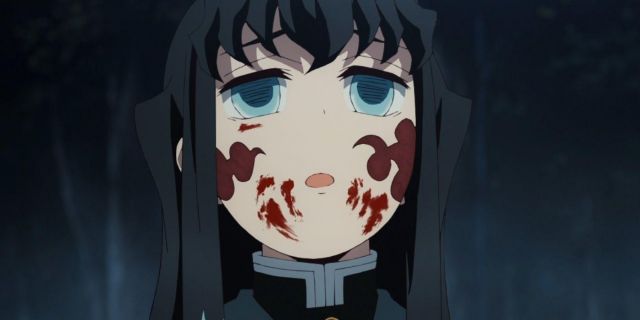Demon Slayer’s main characters may feel like a breath of fresh air, such as Tanjiro’s incredible compassion as a hero and Inosuke’s inability to say Tanjiro’s name, but they still align pretty closely to well-established character archetypes, such as the anime himbo. In a way, the late Kyojuro Rengoku felt like a himbo, but it’s actually Muichiro Tokito who’s Demon Slayer’s best take on this character type.
Even if Muichiro takes his duty seriously and tries to act cool and dignified, he cannot deny his airheaded himbo ways, and more and more characters in the “Swordsmith Village” arc are picking up on that. It’s funny to watch Muichiro absent-mindedly drift through the story like this, but his quiet himbo ways do serve a narrative purpose, albeit a minor one.
What Is a Himbo When It Comes to Anime Settings?

The “himbo” archetype in anime describes a character, usually a male one, who uses sheer brawn and goofy charisma to make up for their limited intelligence or lack of common sense. Fans might casually call this the “strong but stupid” archetype, with Dragon Ball‘s Son Goku being an early and prominent example. However, calling someone a himbo is not an insult. Himbos are popular because they are refreshingly straightforward and good-natured, and they often lack self-awareness of how foolish they are. Himbos are often brave, energetic, and kind to boost their charisma, such as Naruto‘s wholesome teacher Might Guy or the supportive Mirio Togata in My Hero Academia, who inspired the dandere Tamaki Amajiki to become the “sun eater.”
Himbos also tend to be loud characters who shout and make a big fuss in and out of combat, but interestingly, there’s been a trend toward “quiet and stupid” rather than “loud and stupid.” This helps refresh older, increasingly stale character archetypes of loud and brutish heroes, and Demon Slayer’s Muichiro Tokito is part of this trend. He’s not alone, either; Mashle’s Mash Burnedead is a soft-spoken and introverted himbo, and at times, even One-Punch Man’s Saitama feels like a quiet himbo, such as his famous “okay” statement during his fight against Boros. Like Saitama and Mash, Muichiro is content to live a quiet and humble life and rarely shows excitement in battle, but his airheaded ways and goofy chibi face make it clear he’s the same kind of himbo deep down that Goku and Might Guy are.
Demon Slayer’s Muichiro Contrasts Sharply With Tanjiro’s Personality

Muichiro may act like a quiet himbo for comedy’s sake and to set him apart from the lively Kyojuro Rengoku and Tengen Uzui, but he’s also an effective foil for protagonist Tanjiro Kamado as well. Tanjiro is an idealistic and emotionally intense demon slayer who often lectures others about his idealism and other shonen values, all rooted in his strong empathy and his protective ways. It’s inspiring to see Tanjiro fight so hard for justice and even use an off-brand “talk jutsu” on Muichiro, but it can also be tiring after a point.
Muichiro serves as a refreshing contrast to the chatty and emotionally charged Tanjiro — a quiet airhead who flips the himbo script. Unlike Tanjiro, Muichiro focuses on the world immediately around him rather than getting lost in idealistic thoughts, and the practical, detached Muichiro simply does what he must for duty’s sake and little more. This allows him to passively challenge Tanjiro’s own mentality, putting very little thought into anything except how to defeat his Upper Moon enemies.
Muichiro’s empty-headed comedy routine makes him an even funnier foil to Tanjiro, idly standing there with a blank look instead of rushing off to ask people if they’re hurt or lecturing demons about justice and morality. Demon Slayer needs someone like this — a quiet himbo who doesn’t just refresh anime’s most blunt character archetype but also deconstructs what it means to be an idealistic, passionate demon slayer who fights for all that’s good and right in the world.















Leave a Reply